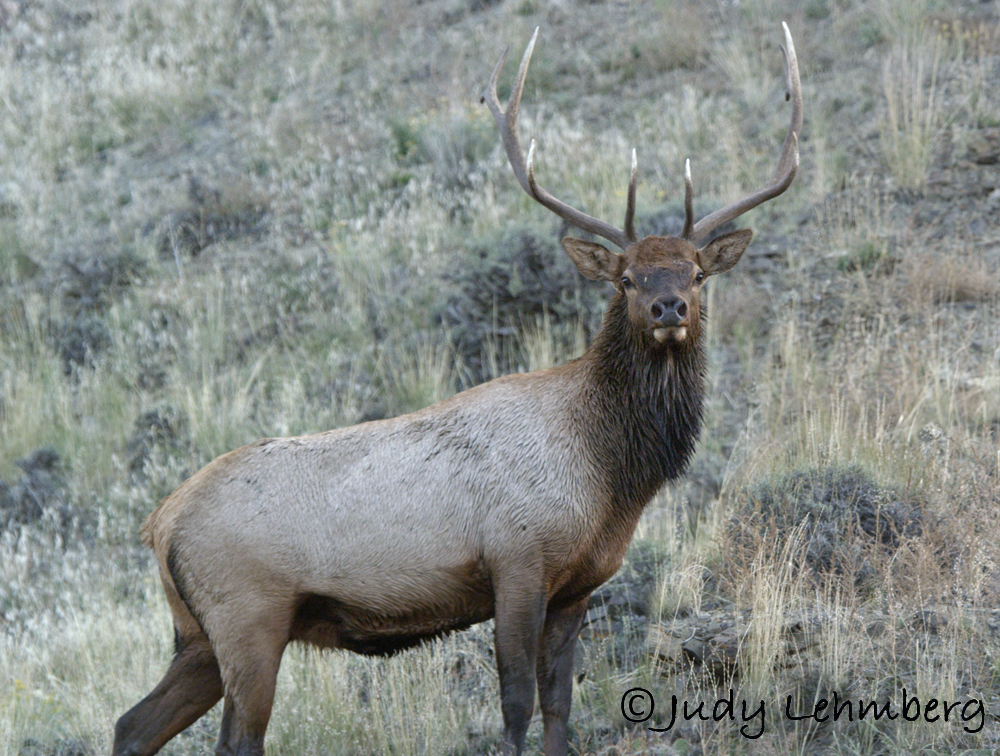

There are a few towns near national parks and refuges that host some of the animals who “spill over” from the protected land. Gardiner, Montana is one of those towns. In the spring elk, deer, bison and sometimes even bears, hang around Gardiner on their way back into Yellowstone. In the fall they hang around Gardiner as they leave the park for lower elevations. You can always tell the tourists in town. They are the ones taking the point and shoot photos of the elk next to a swing set or grazing on the lawn of a church or hotel (“Where elk stay free”).

We have been hanging around Gardiner in the summers for 40 years but it is only in the last few years since we retired that we get to be there in the spring and fall too. I don’t know if fulltime Gardiner residents get used to the animals but I always enjoy seeing them. It is what an English major friend of mine would call the ironic juxtaposition of sight and sound. Being an inarticulate biology major I try not to ever say things like that, but he is right. There is just something strange about seeing a 6 point mule deer walking down the side walk or an elk crossing the street while he bugles to his girls who are casually eating grass in someone’s front yard.

One of the harder things to photograph in Yellowstone during the elk rut is a male elk herding his girls, bugling, etc. without a building or people in the background so we were thrilled early one morning as we drove towards Gardiner and Yellowstone to find a male elk trying to round up his females on a hill across from the Gardiner airport.

The females were fairly calm but the male had worked himself into a lather. He was chasing all of the females and jumping on all of the ones that didn’t get out of his way in time. I always wonder what the babies are thinking during the rut. They aren’t really a part of it but they do inadvertently get involved.

I’ve never seen a young elk get hurt but I watched a big male bison flip a bison calf over the side of a road once, so I worry. (The calf looked understandably confused but it didn’t appear hurt at all.)
Our photos are available at www.vernelehmberg.com where you will find over 4,000 photos from Africa to Yellowstone.






